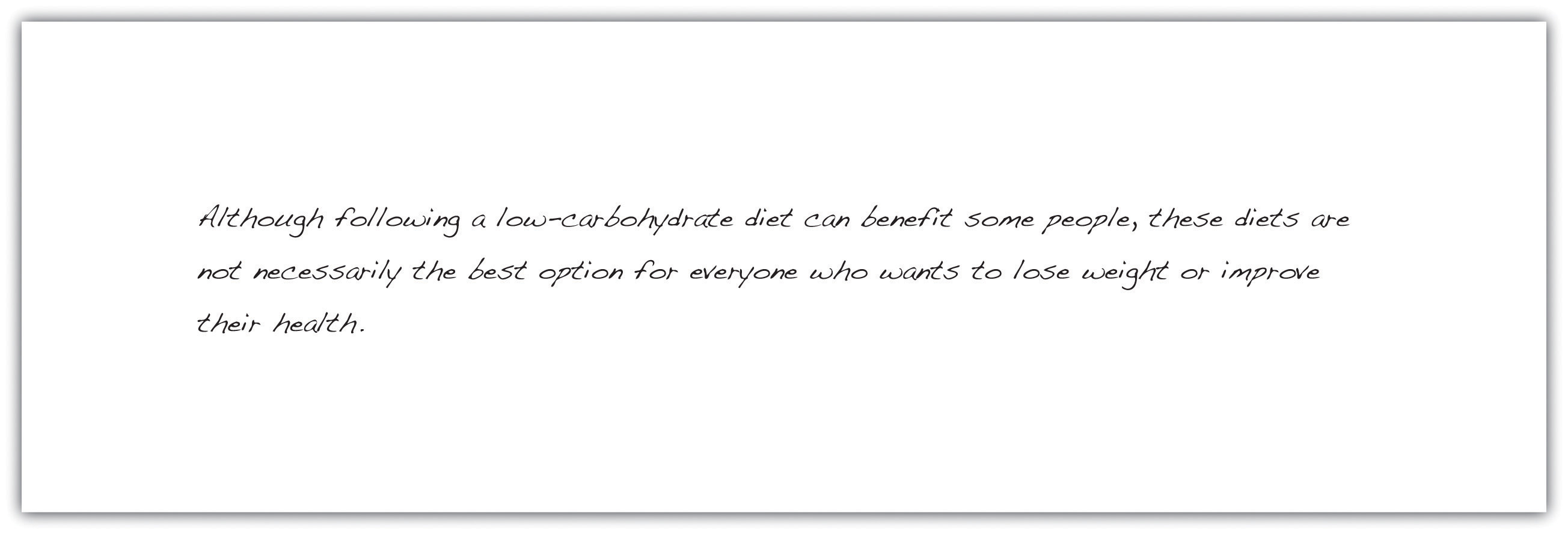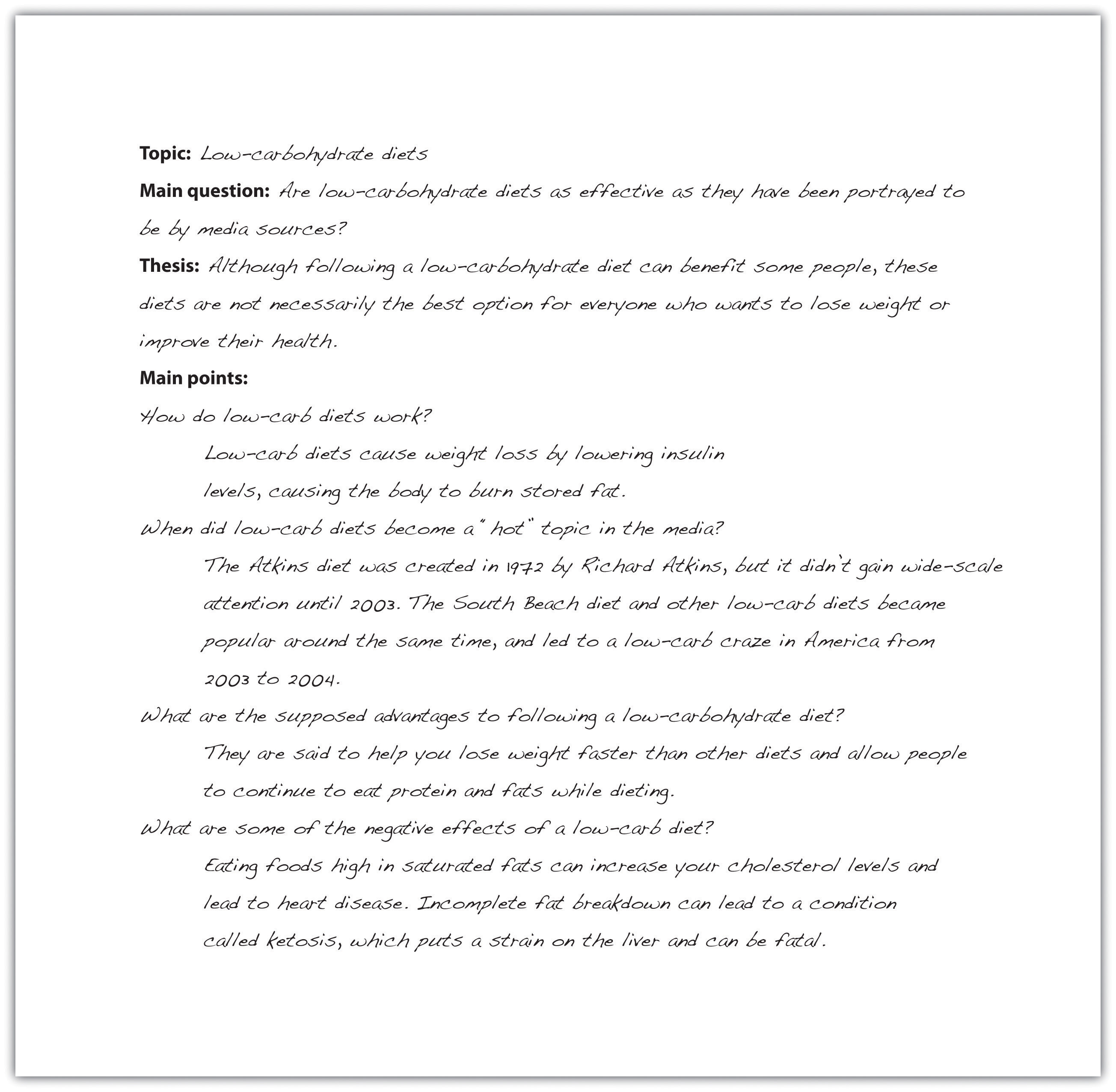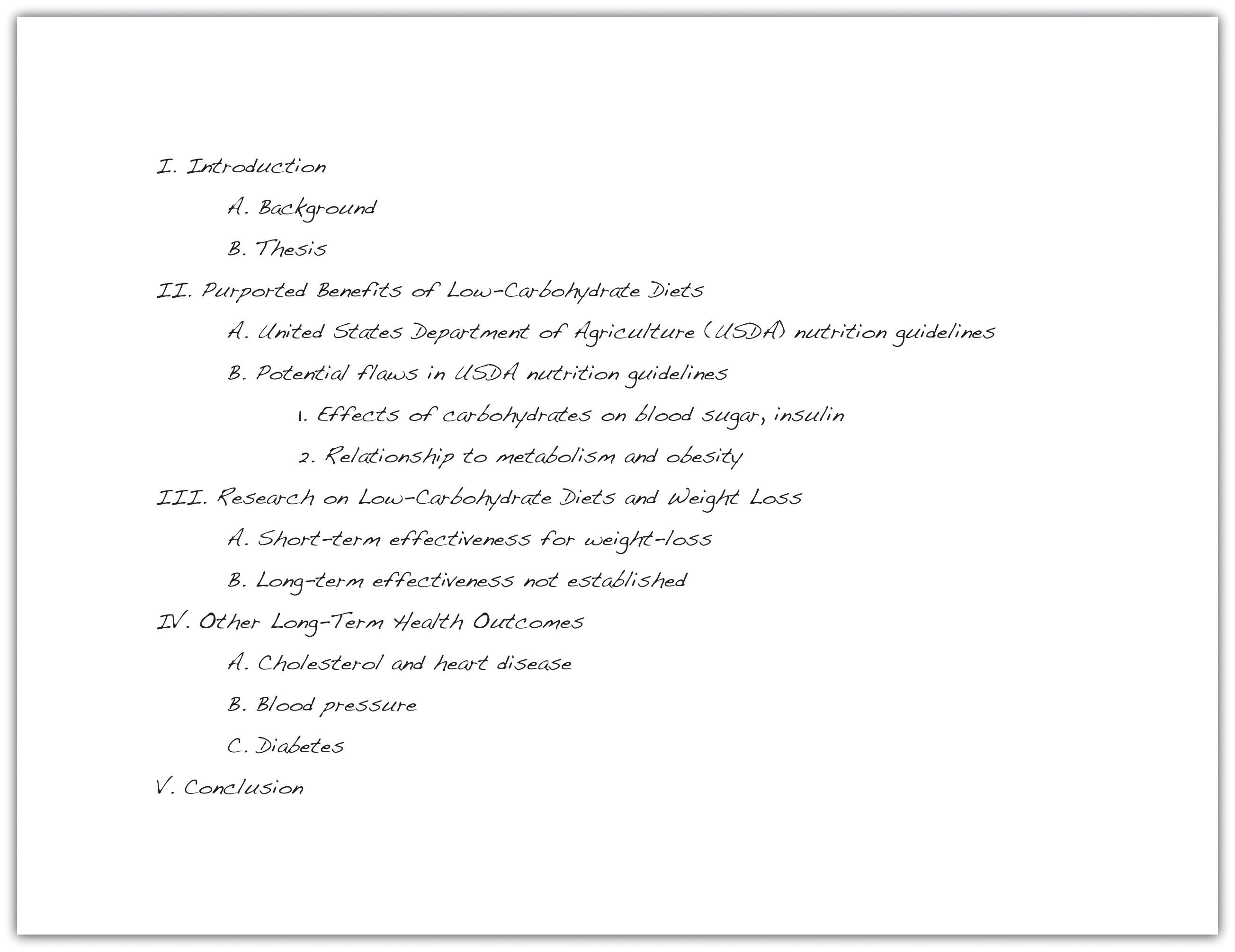This is “Critical Thinking and Research Applications”, section 11.5 from the book Successful Writing (v. 1.0). For details on it (including licensing), click here.
For more information on the source of this book, or why it is available for free, please see the project's home page. You can browse or download additional books there. To download a .zip file containing this book to use offline, simply click here.
11.5 Critical Thinking and Research Applications
Learning Objectives
- Analyze source materials to determine how they support or refute the working thesis.
- Identify connections between source materials and eliminate redundant or irrelevant source materials.
- Identify instances when it is appropriate to use human sources, such as interviews or eyewitness testimony.
- Select information from sources to begin answering the research questions.
- Determine an appropriate organizational structure for the research paper that uses critical analysis to connect the writer’s ideas and information taken from sources.
At this point in your project, you are preparing to move from the research phase to the writing phase. You have gathered much of the information you will use, and soon you will be ready to begin writing your draft. This section helps you transition smoothly from one phase to the next.
Beginning writers sometimes attempt to transform a pile of note cards into a formal research paper without any intermediary step. This approach presents problems. The writer’s original question and thesis may be buried in a flood of disconnected details taken from research sources. The first draft may present redundant or contradictory information. Worst of all, the writer’s ideas and voice may be lost.
An effective research paper focuses on the writer’s ideas—from the question that sparked the research process to how the writer answers that question based on the research findings. Before beginning a draft, or even an outline, good writers pause and reflect. They ask themselves questions such as the following:
- How has my thinking changed based on my research? What have I learned?
- Was my working thesis on target? Do I need to rework my thesis based on what I have learned?
- How does the information in my sources mesh with my research questions and help me answer those questions? Have any additional important questions or subtopics come up that I will need to address in my paper?
- How do my sources complement each other? What ideas or facts recur in multiple sources?
- Where do my sources disagree with each other, and why?
In this section, you will reflect on your research and review the information you have gathered. You will determine what you now think about your topic. You will synthesizeTo combine different elements in order to create something new. When writing a research paper, writers synthesize information to arrive at new ideas or conclusions., or put together, different pieces of information that help you answer your research questions. Finally, you will determine the organizational structure that works best for your paper and begin planning your outline.
Exercise 1
Review the research questions and working thesis you developed in Chapter 11 "Writing from Research: What Will I Learn?", Section 11.2 "Steps in Developing a Research Proposal". Set a timer for ten minutes and write about your topic, using your questions and thesis to guide your writing. Complete this exercise without looking over your notes or sources. Base your writing on the overall impressions and concepts you have absorbed while conducting research. If additional, related questions come to mind, jot them down.
Selecting Useful Information
At this point in the research process, you have gathered information from a wide variety of sources. Now it is time to think about how you will use this information as a writer.
When you conduct research, you keep an open mind and seek out many promising sources. You take notes on any information that looks like it might help you answer your research questions. Often, new ideas and terms come up in your reading, and these, too, find their way into your notes. You may record facts or quotations that catch your attention even if they did not seem immediately relevant to your research question. By now, you have probably amassed an impressively detailed collection of notes.
You will not use all of your notes in your paper.
Good researchers are thorough. They look at multiple perspectives, facts, and ideas related to their topic, and they gather a great deal of information. Effective writers, however, are selective. They determine which information is most relevant and appropriate for their purpose. They include details that develop or explain their ideas—and they leave out details that do not. The writer, not the pile of notes, is the controlling force. The writer shapes the content of the research paper.
While working through Chapter 11 "Writing from Research: What Will I Learn?", Section 11.4 "Strategies for Gathering Reliable Information", you used strategies to filter out unreliable or irrelevant sources and details. Now you will apply your critical-thinking skills to the information you recorded—analyzing how it is relevant, determining how it meshes with your ideas, and finding how it forms connections and patterns.
Writing at Work
When you create workplace documents based on research, selectivity remains important. A project team may spend months conducting market surveys to prepare for rolling out a new product, but few managers have time to read the research in its entirety. Most employees want the research distilled into a few well-supported points. Focused, concise writing is highly valued in the workplace.
Identify Information That Supports Your Thesis
In Note 11.81 "Exercise 1", you revisited your research questions and working thesis. The process of writing informally helped you see how you might begin to pull together what you have learned from your research. Do not feel anxious, however, if you still have trouble seeing the big picture. Systematically looking through your notes will help you.
Begin by identifying the notes that clearly support your thesis. Mark or group these, either physically or using the cut-and-paste function in your word-processing program. As you identify the crucial details that support your thesis, make sure you analyze them critically. Ask the following questions to focus your thinking:
- Is this detail from a reliable, high-quality source? Is it appropriate for me to cite this source in an academic paper? The bulk of the support for your thesis should come from reliable, reputable sources. If most of the details that support your thesis are from less-reliable sources, you may need to do additional research or modify your thesis.
- Is the link between this information and my thesis obvious—or will I need to explain it to my readers? Remember, you have spent more time thinking and reading about this topic than your audience. Some connections might be obvious to both you and your readers. More often, however, you will need to provide the analysis or explanation that shows how the information supports your thesis. As you read through your notes, jot down ideas you have for making those connections clear.
- What personal biases or experiences might affect the way I interpret this information? No researcher is 100 percent objective. We all have personal opinions and experiences that influence our reactions to what we read and learn. Good researchers are aware of this human tendency. They keep an open mind when they read opinions or facts that contradict their beliefs.
Tip
It can be tempting to ignore information that does not support your thesis or that contradicts it outright. However, such information is important. At the very least, it gives you a sense of what has been written about the issue. More importantly, it can help you question and refine your own thinking so that writing your research paper is a true learning process.
Find Connections between Your Sources
As you find connections between your ideas and information in your sources, also look for information that connects your sources. Do most sources seem to agree on a particular idea? Are some facts mentioned repeatedly in many different sources? What key terms or major concepts come up in most of your sources regardless of whether the sources agree on the finer points? Identifying these connections will help you identify important ideas to discuss in your paper.
Look for subtler ways your sources complement one another, too. Does one author refer to another’s book or article? How do sources that are more recent build upon the ideas developed in earlier sources?
Be aware of any redundancies in your sources. If you have amassed solid support from a reputable source, such as a scholarly journal, there is no need to cite the same facts from an online encyclopedia article that is many steps removed from any primary research. If a given source adds nothing new to your discussion and you can cite a stronger source for the same information, use the stronger source.
Determine how you will address any contradictions found among different sources. For instance, if one source cites a startling fact that you cannot confirm anywhere else, it is safe to dismiss the information as unreliable. However, if you find significant disagreements among reliable sources, you will need to review them and evaluate each source. Which source presents a sounder argument or more solid evidence? It is up to you to determine which source is the most credible and why.
Finally, do not ignore any information simply because it does not support your thesis. Carefully consider how that information fits into the big picture of your research. You may decide that the source is unreliable or the information is not relevant, or you may decide that it is an important point you need to bring up. What matters is that you give it careful consideration.
As Jorge reviewed his research, he realized that some of the information was not especially useful for his purpose. His notes included several statements about the relationship between soft drinks that are high in sugar and childhood obesity—a subtopic that was too far outside of the main focus of the paper. Jorge decided to cut this material.
Reevaluate Your Working Thesis
A careful analysis of your notes will help you reevaluate your working thesis and determine whether you need to revise it. Remember that your working thesis was the starting point—not necessarily the end point—of your research. You should revise your working thesis if your ideas changed based on what you read. Even if your sources generally confirmed your preliminary thinking on the topic, it is still a good idea to tweak the wording of your thesis to incorporate the specific details you learned from research.
Jorge realized that his working thesis oversimplified the issues. He still believed that the media was exaggerating the benefits of low-carb diets. However, his research led him to conclude that these diets did have some advantages. Read Jorge’s revised thesis.

Synthesizing and Organizing Information
By now your thinking on your topic is taking shape. You have a sense of what major ideas to address in your paper, what points you can easily support, and what questions or subtopics might need a little more thought. In short, you have begun the process of synthesizing information—that is, of putting the pieces together into a coherent whole.
It is normal to find this part of the process a little difficult. Some questions or concepts may still be unclear to you. You may not yet know how you will tie all of your research together. Synthesizing information is a complex, demanding mental task, and even experienced researchers struggle with it at times. A little uncertainty is often a good sign! It means you are challenging yourself to work thoughtfully with your topic instead of simply restating the same information.
Use Your Research Questions to Synthesize Information
You have already considered how your notes fit with your working thesis. Now, take your synthesis a step further. Analyze how your notes relate to your major research question and the subquestions you identified in Chapter 11 "Writing from Research: What Will I Learn?", Section 11.2 "Steps in Developing a Research Proposal". Organize your notes with headings that correspond to those questions. As you proceed, you might identify some important subtopics that were not part of your original plan, or you might decide that some questions are not relevant to your paper.
Categorize information carefully and continue to think critically about the material. Ask yourself whether the sources are reliable and whether the connections between ideas are clear.
Remember, your ideas and conclusions will shape the paper. They are the glue that holds the rest of the content together. As you work, begin jotting down the big ideas you will use to connect the dots for your reader. (If you are not sure where to begin, try answering your major research question and subquestions. Add and answer new questions as appropriate.) You might record these big ideas on sticky notes or type and highlight them within an electronic document.
Jorge looked back on the list of research questions that he had written down earlier. He changed a few to match his new thesis, and he began a rough outline for his paper.

Exercise 2
Review your research questions and working thesis again. This time, keep them nearby as you review your research notes.
- Identify information that supports your working thesis.
- Identify details that call your thesis into question. Determine whether you need to modify your thesis.
- Use your research questions to identify key ideas in your paper. Begin categorizing your notes according to which topics are addressed. (You may find yourself adding important topics or deleting unimportant ones as you proceed.)
- Write out your revised thesis and at least two or three big ideas.
You may be wondering how your ideas are supposed to shape the paper, especially since you are writing a research paper based on your research. Integrating your ideas and your information from research is a complex process, and sometimes it can be difficult to separate the two.
Some paragraphs in your paper will consist mostly of details from your research. That is fine, as long as you explain what those details mean or how they are linked. You should also include sentences and transitions that show the relationship between different facts from your research by grouping related ideas or pointing out connections or contrasts. The result is that you are not simply presenting information; you are synthesizing, analyzing, and interpreting it.
Plan How to Organize Your Paper
The final step to complete before beginning your draft is to choose an organizational structure. For some assignments, this may be determined by the instructor’s requirements. For instance, if you are asked to explore the impact of a new communications device, a cause-and-effect structure is obviously appropriate. In other cases, you will need to determine the structure based on what suits your topic and purpose. For more information about the structures used in writing, see Chapter 10 "Rhetorical Modes".
The purpose of Jorge’s paper was primarily to persuade. With that in mind, he planned the following outline.

Exercise 3
Review the organizational structures discussed in this section and Chapter 10 "Rhetorical Modes". Working with the notes you organized earlier, follow these steps to begin planning how to organize your paper.
- Create an outline that includes your thesis, major subtopics, and supporting points.
- The major headings in your outline will become sections or paragraphs in your paper. Remember that your ideas should form the backbone of the paper. For each major section of your outline, write out a topic sentence stating the main point you will make in that section.
- As you complete step 2, you may find that some points are too complex to explain in a sentence. Consider whether any major sections of your outline need to be broken up and jot down additional topic sentences as needed.
- Review your notes and determine how the different pieces of information fit into your outline as supporting points.
Collaboration
Please share the outline you created with a classmate. Examine your classmate’s outline and see if any questions come to mind or if you see any area that would benefit from an additional point or clarification. Return the outlines to each other and compare observations.
Writing at Work
The structures described in this section and Chapter 10 "Rhetorical Modes" can also help you organize information in different types of workplace documents. For instance, medical incident reports and police reports follow a chronological structure. If the company must choose between two vendors to provide a service, you might write an e-mail to your supervisor comparing and contrasting the choices. Understanding when and how to use each organizational structure can help you write workplace documents efficiently and effectively.
Key Takeaways
- An effective research paper focuses on presenting the writer’s ideas using information from research as support.
- Effective writers spend time reviewing, synthesizing, and organizing their research notes before they begin drafting a research paper.
- It is important for writers to revisit their research questions and working thesis as they transition from the research phase to the writing phrase of a project. Usually, the working thesis will need at least minor adjustments.
- To organize a research paper, writers choose a structure that is appropriate for the topic and purpose. Longer papers may make use of more than one structure.




